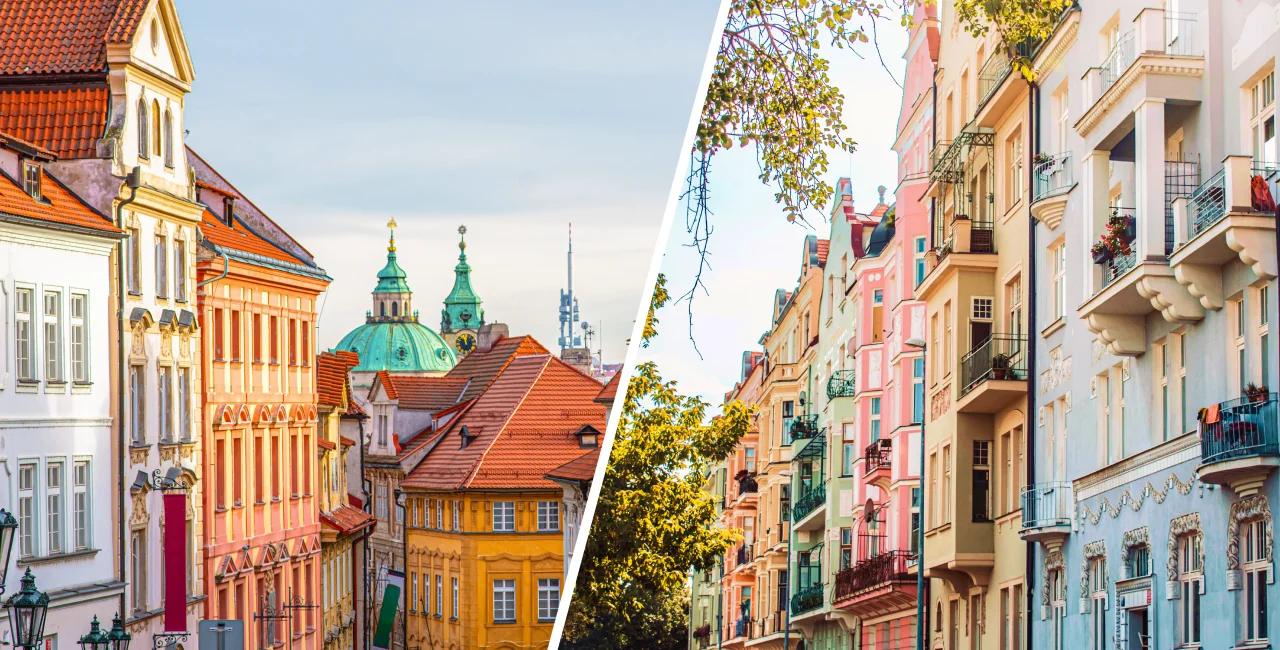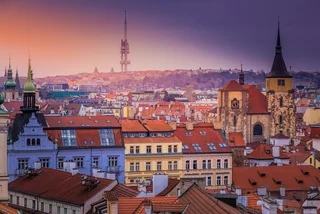If you dream of renting or buying in one of Prague’s most sought-after neighborhoods, hold that thought. According to the latest Deloitte Rent Index, Prague’s rental market has surged over the past year, while property prices—particularly near metro stations—have hit new highs.
Then again, the affordable housing crisis seems to be redrawing the price map for long-established, top-price neighborhoods. For example, if you’ve fantasized about a cozy pied-à-terre in Malá Strana, the rent index suggests it may be a more budget-friendly option than expat-beloved Vinohrady.
"A certain anomaly is Prague 1, where the price has not only fallen and where, for the first time, rents are not the most expensive within the metropolis," says Petr Hána, director of real estate and construction at Deloitte.
According to a comprehensive 10-year analysis by Hypox and Dataligence, the news is even more dire for potential buyers, particularly those eyeing property near metro stations where you won’t find a price per square meter below CZK 100,000 unless you venture out to the polar opposite C-line stations of Roztyly or Letňany.
Highs and lows: Prague rents by district and building type
In the third quarter of 2024, Prague’s rental prices rose by 3.4 percent, bringing the average price per square meter to CZK 422. Prague 2 now leads with rents averaging CZK 477 per square meter, surpassing the traditionally high-priced Prague 1, where rents dropped by 2.3 percent.
Other neighborhoods saw notable increases as well. In Prague 3 rents rose by 4.5 percent to CZK 443 per square meter, and in Prague 8 rents jumped by 4.3 percent to CZK 434 per square meter. At the other end of the spectrum, the most affordable rents (out of all surveyed areas by Deloitte, which typically includes in districts 1 to 10) are still found in Prague 4 and Prague 10, where residents pay an average of CZK 387 per square meter.

According to experts from Deloitte, the highest rents are in apartments in new buildings and developers' projects (where the average price per square meter rose by 2.5 percent to CZK 376 per square meter), as well as in brick houses (growth by 1 percent to CZK 310). On the low rung of the price ladder, panel houses (rent grew by about CZK 263 per meter, up +1.2 percent).
Portfolio PMO (DE, IT)

Outreach Supervisor

Service Center Specialist with EN - summer only

Trainee Recruitment Consultant - French Team!

Metro proximity equals premium property prices
Milan Roček, co-founder of Hypox and Dataligence shared that even in outlying areas, property values near the metro have risen significantly, driven by new development and growing demand. No other neighborhood illustrates this depressing stat than Holešovice, where the Nádraží Holešovice station saw a jaw-dropping 241 percent increase in price per square meter since 2014. A square meter here cost CZK 41,461 in 2014; today, it’s a whopping CZK 141,340.
Central stations such as Staroměstská, Náměstí Republiky, and Hlavní nádraží remain the most expensive by a wide margin. Prices here now routinely exceed CZK 200,000 per square meter. Ten years ago, these areas averaged around half that—CZK 117,603 at Staroměstská. Today, Staroměstská is one of the most expensive stops in the city, where a typical 70-square-meter apartment will set you back between CZK 12.6 and 15.7 million.
Other stations seeing similarly dramatic hikes, include Zličín, Invalidovna, and Černý Most more than tripling, underscoring the demand for properties within easy access to transit.
Meanwhile, Roztyly and Letňany remain the exceptions, where you can still get a square meter under CZK 100,000 at around CZK 92,671 and CZK 97,000, respectively. For those looking for relatively affordable options, these areas are rare finds—but their appeal may grow even more as central prices continue to escalate.
Buy, rent, kill?
According to Hána, the price of rental housing is unlikely to stabilize anytime soon, as demand outstrips supply and high mortgage rates deter would-be homeowners from entering the property market. This sustained demand in rental and ownership markets shows little sign of waning, particularly in areas with robust infrastructure and proximity to metro stations.
What's driving these numbers? New developments are largely to blame—and to thank. Areas with a higher density of new constructions, like Jinonice and Radlická, have seen prices climb even faster than spots like Smíchovské nádraží, where older buildings dominate.
While outer-line stops like Depo Hostivař (line A) and Smíchovské nádraží (line B) are among more affordable options, with a 70-square-meter apartment running between CZK 6.5 million and 7.3 million, their days as budget-friendly neighborhoods may be numbered; developers anticipate a spike in local property values near Smíchovské nádraží once the massive Smíchov City project is completed.
This means that if you're living on the average Czech salary, you should buy in Letňany, rent in Malá Strana, and kill your dreams of owning or renting in Vinohrady—unless you have a winning lottery ticket handy.












 Reading time: 4 minutes
Reading time: 4 minutes 


 German
German
 Dutch
Dutch




















